Selfridges is celebrating its centenary this year. Charlotte Hardie explains what has made it one of the world’s most iconic stores and why Gordon Selfridge’s legacy will endure
Talk about good timing. Just when retailers and shoppers need a little cheering up, Selfridges has the perfect excuse to party. 100 years ago, 90,000 customers flocked through the doors on the opening day of the store on Oxford Street, and over the past century it has cemented its place as an iconic store. It is a remarkable tale.
The achievements of flamboyant founder Gordon Selfridge are certainly worthy of a toast. As chief executive Paul Kelly says: “This is a man who came here from the States and started a whole new revolution in retail. To me, that’s the most important thing he’s ever done. He changed retailing in the UK forever.”
Selfridge was a visionary. In 1909 he understood that to make customers spend, you have to capture their imagination. He once said: “The whole art of merchandising consists of appealing to the imagination. Once the imagination is moved, the hand goes naturally to the pocket. But if the first appeal is to the purse, the imagination is apt to revolt and raise barriers against buying. In trade, as in most other things, the mind is master.”
He was a retailer who liked to do things differently. For instance, walking into a beauty hall at a department store entrance might now be commonplace, but Selfridge was the first to introduce the concept. Aside from enticing shoppers, it was also a welcome distraction from the smell of horse manure emanating from the streets outside.
What is striking about Selfridge is the strength of his legacy. “Everyone is welcome” was one of his commonly used phrases. This is just as important to the brand today as it was then. Kelly says: “Someone said to me the other day: ‘I don’t get it, you’ve got brands like Uniqlo and Armani all in one building.’ But it works, and that’s what makes our business special.
People are able to touch anything from Topshop right through to Lanvin. You have this eclectic mix of people with Primark bags in one hand and Selfridges bags in the other.”
From a shopper’s point of view, adds Kelly, the concept of the store’s 100th birthday is not pivotal, but he says it “does instil confidence that people are shopping in a business that has history, longevity, and they see a future in it”.
So will the department store concept still be relevant in another hundred years? Kelly says: “I certainly believe a business like this has to be around for another 100 years. There is always room for good businesses. That doesn’t mean to say that department stores won’t go out of business. Some will, but others will continue to move on and evolve into the future.”
As a brand, Selfridges constantly introduces changes into its stores. The launch of Oxford Street’s Wonder Room – housing jewellery, watches and luxury gifts – in 2007 has made an impression on shoppers all over the world and is now a tourist attraction in its own right. And later this year it will overhaul and expand its women’s shoes department with the aim of
creating a similarly spectacular space.
Looking to the future, one major milestone will be the launch of Selfridges’ transactional website early next year. The retailer has only four locations in the UK, and selling online will make the brand far more accessible. But for a brand that thrives on innovation, is it a little late in the game? Many might say that its arrival in the world of e-commerce is much delayed. Not at all, argues Kelly.
Since he assumed the chief executive role, he says his team’s first focus has been getting the business into shape – and as a privately owned business, it has the luxury of moving at its own pace. “We’ll do things in our own time frame and we’ll do them properly. This isn’t about taking a tenner out of our back pockets and throwing it at e-commerce like a lot of companies have done,” he says.
But taking Selfridge’s legacy to an international stage does not feature in the grand plans. Kelly says the retailer is “inundated” with opportunities to expand overseas. While he holds that you should never say never, he doesn’t see the need to go international and says he has “more important things to do”.
No doubt one such preoccupation is trading a business through some of the toughest times in its history. So far, Selfridges has riden out the recession well. Last year was its strongest ever in terms of profitability and sales, it enjoyed a good Christmas and Kelly says it is in a strong position for the year to date. “It’s not that I’m unfazed,” he explains, “but we can’t go around thinking the world’s going to end tomorrow. Providing we run our business in a professional way, we can take into account what’s happening in the world at large.”
He relates the anecdote of a colleague who has just come back from visiting the “Rotten Apple”, as he likes to call it. She was particularly impressed by the attitude of everyone in the US towards their economic problems. Kelly says: “They don’t even talk about it. Americans are like that. They get it over and done with, move on and are doing something about it.”
His point is that people’s attitudes within a business are vital. As he puts it: “All we can do is control what’s inside the four walls of our buildings.” He concludes: “Retailing’s not like politics. In this business the customers vote for you every day.” If Selfridge were alive today, he would be one happy man.
100 years of Selfridges
1909 - 90,000 people visited the Oxford Street store on its opening day in March
1910 - Gordon Selfridge opened a beauty department inside the entrance
1911 - The bargain basement opened, aimed at “thrifty housewives”
1913 - The first UK demonstration of the tango was performed by famous dancers for 2,000 revellers at a charity ball on the store’s roof terrace
1914 - As men enlisted for the war, women assumed roles throughout the business ranging from window cleaners to boiler stokers
1925 - Scottish inventor John Logie Baird demonstrated history in the making by showing his “televisor” in the store
1930s - Wall Street’s collapse had yet to hit Europe, and Selfridges splashed out on an extravagant promotion of its 21st birthday; Selfridge retired in 1939, taking the nominal title of president
1940s - The store survived the war comparatively unscathed, although the Blitz destroyed the roof gardens, which never re-opened to the public; Selfridge died in 1947
1951 - Selfridges was sold for £3.4m to retailing group Lewis’s Investment Trust.
As shoppers emerged from the post-war economic gloom, sales surged as newly affluent families craved big-ticket goods
1965 - Retail tycoon Charles Clore and Leonard Sainer, deputy chairman of Clore’s British Shoe Corporation and parent company Sears, acquired Selfridges for £63m after a takeover bid
1960- 1975 - Selfridges received a makeover. To keep up with the fashion boom of the 1960s it also opened Miss Selfridge in 1966, which had its own entrance, a coffee bar and specially mixed music
1974 - Selfridges was bombed as London was subjected to intensifying IRA activity
1980s - The retailer became the first department store to advertise on TV
1990s - The now iconic yellow carrier bag was introduced. Sears launched a £94m Selfridges redevelopment programme that would pave the way for its demerger from its parent company
1996 - Vittorio Radice was appointed chief executive
1998 - A Selfridges store opened in Manchester’s Trafford Park; the demerged retailer floated on the London Stock Exchange
2002 - Manchester’s city centre store launched
2003 - Canadian food retailer Galen Weston and his family bought Selfridges for £600m; its Birmingham store also opened
2004 - Paul Kelly joined as chief executive
2007 - The Wonder Room was launched, transforming a previously uninspiring corner of the store selling men’s shirts and accessories into a luxury retailing space
2009 - Selfridges celebrates its 100th birthday
The oxford street Centenary festivities
The marketing: From May 1 the canopy over the main entrance to the store will boast a neon sign with the slogan “Open to the world since 1909” – a line taken from one of the original Selfridges ads.
The windows: Selfridges window displays will recreate old window designs throughout the ages, using shades of grey with splashes of Pantone 109 – the now famous shade of Selfridges yellow. Later on in the summer the window theme will be 2109 – a take on what the world might look like in 100 years’ time.
The store: The central atrium will be filled with a “waterfall” installation made from yellow paper aeroplanes. Harry Gordon Selfridge had countless connections with aviation. For instance, in July 1909 he went to Dover to meet Louis Blériot, the first person to fly across the English Channel. Selfridge brought the plane to London and displayed it in the store.
The exhibition: Archived photos that celebrate 100 years of shopping at Selfridges will be on display in an exhibition on the lower ground floor of the store.
The product: Selfridges has worked with brands and designers such as Marc Jacobs to create exclusive products in the Selfridges yellow. The products will be sold in all of the stores, and in London they will be merchandised in the concept store – one area of the Wonder Room.
The Big Yellow Festival: Running throughout May, this will include a beauty event – Beauty 100 – on Thursdays, music events on Fridays, DJ-accompanied fashion shows on Saturdays and a cabaret on Sundays. Also parading around the store
will be a troop of women called the Selfridgettes, who will be accompanied by an impersonator of Selfridge.
Gordon Selfridge showman of shopping
As with many a big name in retail, US-born Selfridges founder Gordon Selfridge was a character, to say the least. Aged 50 in 1906, bored and wealthy after selling his phenomenally successful Chicago department store Marshall and Field, he moved his family to London to embark on his new project – the minor challenge of setting up a department store from scratch.
With no expense spared, Selfridges opened its doors in 1909 after more than two years of designing and planning. To spread the word, Selfridge launched one of the largest ad campaigns ever mounted in the British press.
From the outset, he understood the importance of spectacle and retail theatre and soon developed a reputation as the “showman of shopping”. He ruled that in-store events and exhibitions were crucial. He was also widely known for his extravagance.
But his ostentatious tendencies contributed to his downfall. By the late 1930s, owing to his penchant for gambling and spending his fortune on women, his personal wealth had all but vanished. In 1939, aged 83, owing thousands in taxes and heavily in debt to the store, he was forced to retire with the nominal title of president. After leaving his Park Lane apartment for a more humble abode in Putney, the showman of shopping died in 1947.
Gordon Selfridge may have fallen from grace, but his legacy proves that he was a retailing genius.




















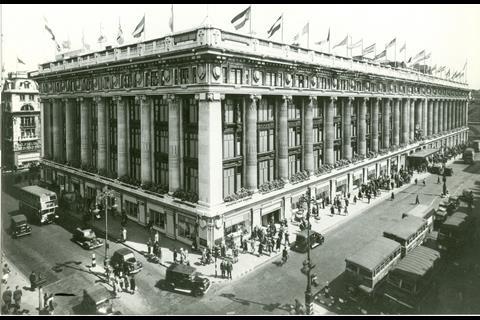
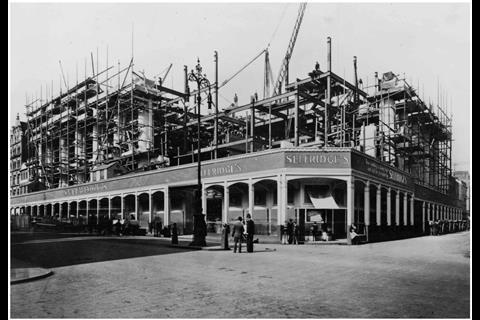
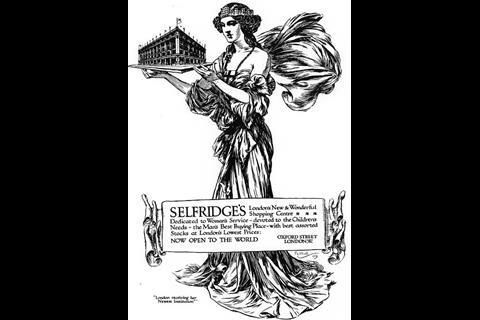
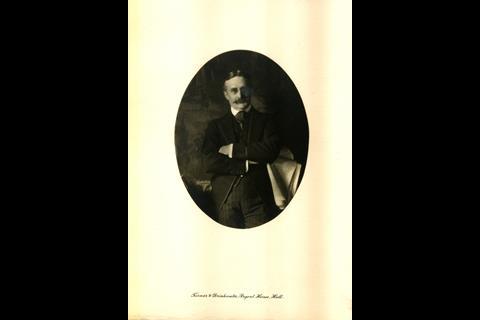
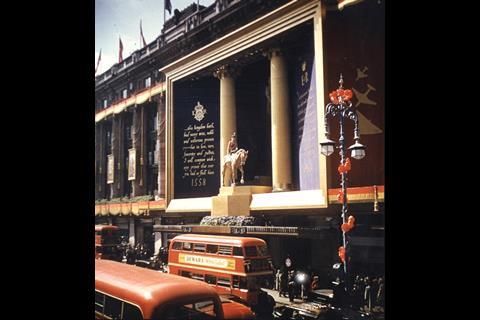



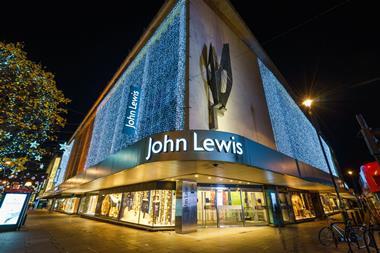

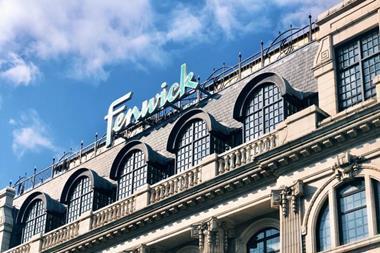

No comments yet